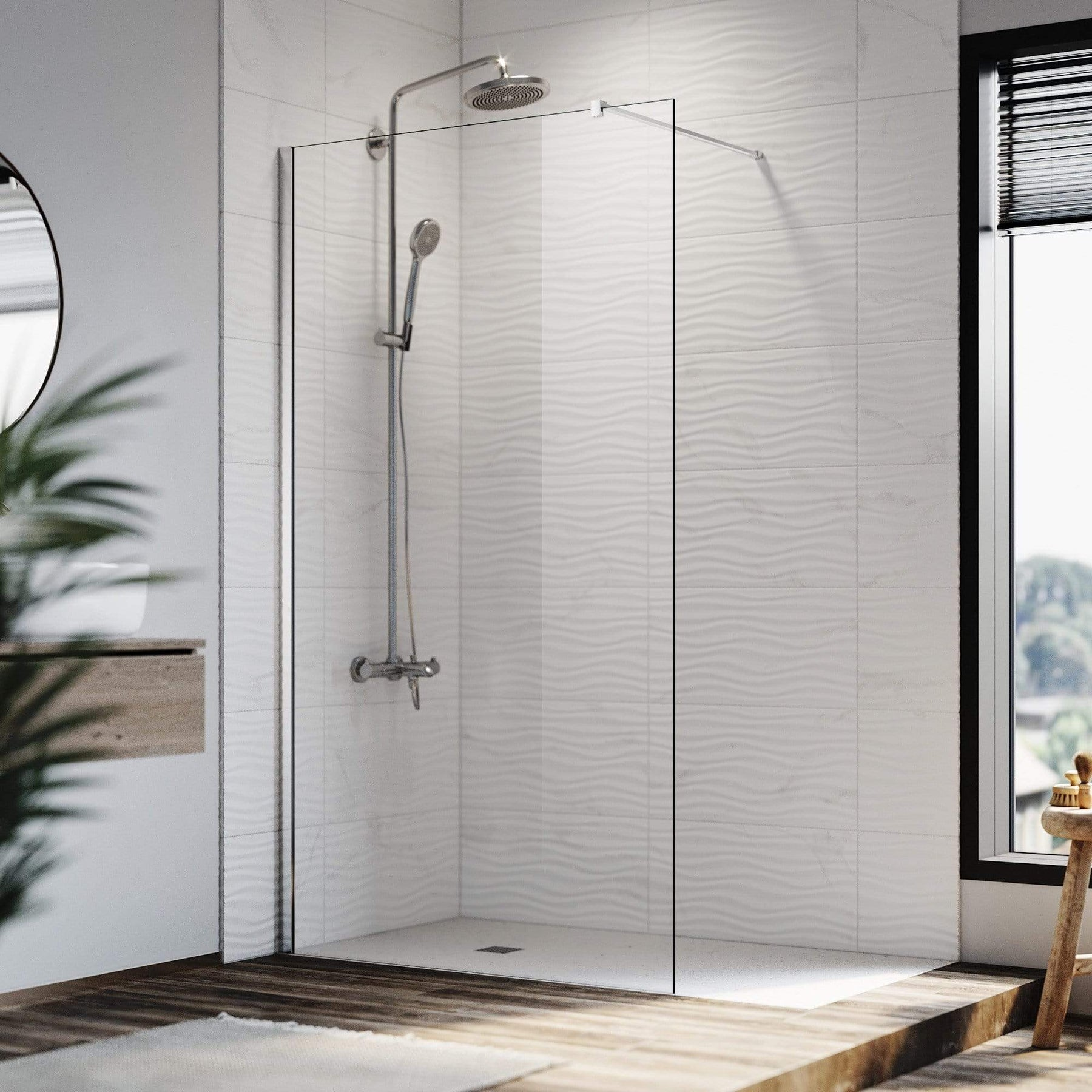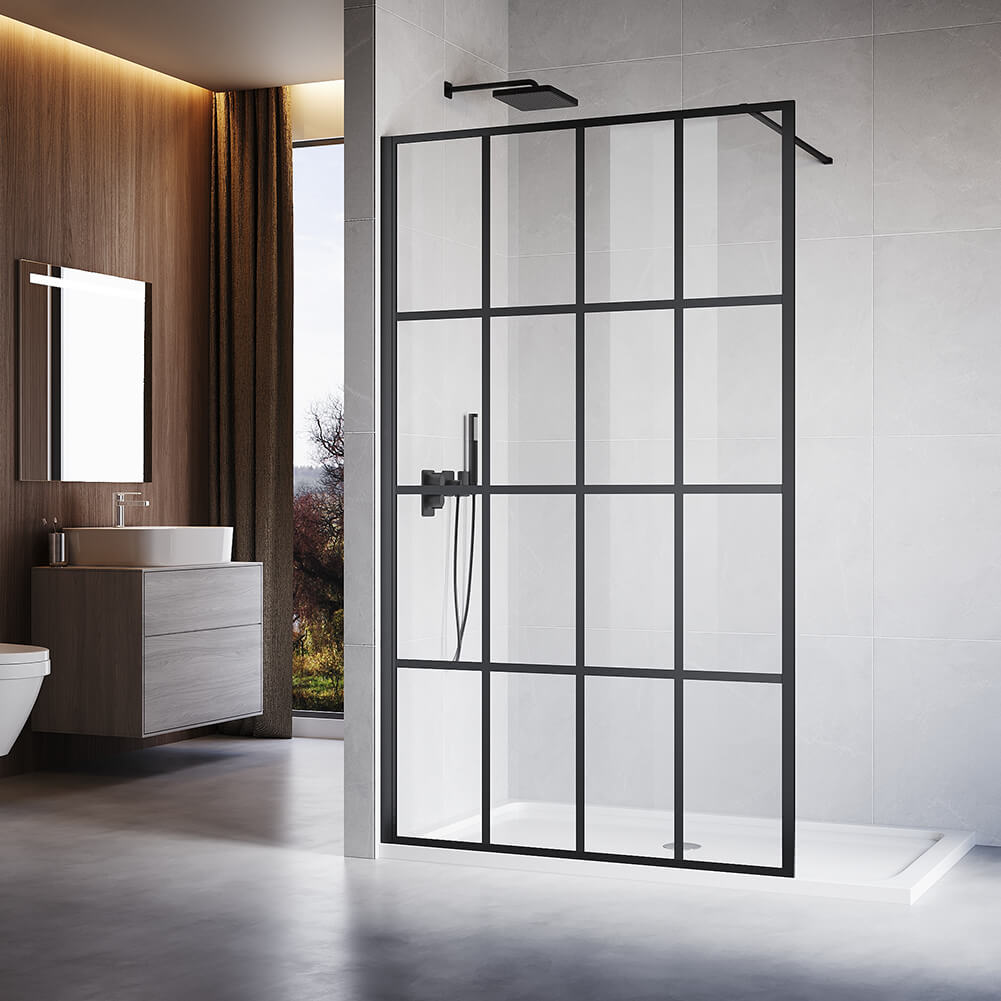When renovating a bathroom, one key decision is choosing the right thickness for shower glass. Selecting glass that is too thin risks safety issues, while thicker glass can add unnecessary expense. In Australia, the most common thicknesses for shower enclosures are 6mm, 8mm, and 10mm.
The Australian Standard AS 1288 provides specifications to ensure shower glass meets minimum safety requirements. However, going beyond the minimum guidelines provides extra impact resistance and durability. This article will explain the Australian safety standards, pros and cons of 6mm, 8mm, and 10mm glass, relative costs, and factors to help you determine the best thickness for your bathroom remodel or new construction project.
Selecting the optimum glass thickness involves balancing safety, aesthetics, and budget. The right choice depends on shower size, number of users, presence of children or elderly, and personal style preferences. Read on to make an informed decision for your next bathroom project.
What is Shower Glass Thickness: The Basics
Shower glass thickness refers to the measurement of how thick the glass panels are within your shower enclosure. It is denoted in millimetres (mm) - the higher the millimetre number, the thicker the glass. Understanding shower glass thickness matters because it impacts two key factors - safety and durability. Thicker glass is inherently more durable and resistant to impact, meaning it is less prone to cracking or shattering.
Tempered safety glass is mandatory for all shower enclosures under Australian Standard AS 1288. This type of glass undergoes a strengthening heat treatment process and shatters into small, rounded cubes rather than dangerously sharp shards when broken. While 6mm tempered glass meets minimum safety standards, thicker options like 10mm provide extra impact resistance and longevity.
The relevance of thickness stems from the risk of glass breakage, which can lead to injuries. Thicker glass reduces this risk and provides greater protection, especially in bathrooms used by children or elderly individuals. Thus, evaluating your needs and assessing thickness options is an important part of ensuring safety as well as setting realistic renovation budgets.
Australian Safety Standards: AS 1288 Explained
When selecting shower glass in Australia, it is essential to comply with standard AS 1288: Glass in buildings - Selection and installation. This standard covers safety glass used in buildings and states mandatory rules for shower glass.
Firstly, all shower glass must use either tempered/toughened safety glass or laminated safety glass. This ensures that if broken, the glass will not shatter into dangerous sharp shards. Beyond the basic type of glass, AS 1288 also specifies minimum thickness requirements based on panel height, width and total area. For example, panels over 2 metres high or 1 metre wide must be minimum 8mm.
The total panel area also affects thickness - panels between 5-8 square metres require 8mm glass while larger areas call for 10mm or thicker. Where structural support is needed or with frameless showers, 10-12mm may be advised regardless of panel size. Essentially, larger, heavier panels or those bearing more weight require thicker glass for safety.
Compliance with AS 1288 is critical for insurance coverage plus protecting shower users from harm if breakages occur. While 6mm satisfies the minimum criteria, opting for thicker glass provides an extra margin of impact protection in high traffic areas. When designing shower enclosures to standards, both dimensions and intended use should shape appropriate glass thickness selection.
6mm Shower Glass: Pros, Cons, and Best Uses
Pros:
· Lightweight and easy to manually handle and install
· More affordable than thicker glass
· Suitable thickness for small, framed shower enclosures
· Easier to cut and work with during fabrication
· Takes up less space with a slimmer profile
Cons:
· Prone to more vibrations and noise when knocked
· Does not provide as much impact resistance
· Can feel hollow or flimsy when tapped
· Not suitable for large or heavy frameless shower designs
· Higher risk of damage or breakage over time
Best Uses:
· Small, compact shower cubicles and secondary bathrooms
· Rental properties and budget renovations
· Framed shower enclosures under 1m wide x 2m high
Compliance with AS 1288:
· 6mm thickness is only allowed for showers under 1 metre wide and 2 metres high
· Must be tempered or laminated safety glass
8mm Shower Glass: Pros, Cons, and Best Uses
Pros:
· Provides good impact resistance and durability
· Thicker and more substantial feel than 6mm glass
· Reduced noise and vibration when closed
· Suitable thickness for frameless and semi-frameless showers
· Often the most economical choice for medium-sized enclosures
· Typically, compliant with safety standards for average showers
Cons:
· Heavier and harder to manually move or install
· More expensive than slimmer 6mm glass
· Not as highly impact-resistant as 10mm+ glass
Best Uses:
· Most common choice for Australian bathrooms
· Frameless walk-in showers and enclosures
· Semi-frameless showers with just a couple of supports
· Medium-sized shower stalls from 1 to 2 metres wide
Compliance with AS 1288:
· Allows taller Glass panels from 2 metres to 3 metres high
· Permitted for glass panels from 1 to 2 metres wide
· Favored thickness for average Australian shower sizes
· Provides safety compliance for standard home applications
The 8mm thickness hits a sweet spot between strength, cost, and weight making it the popular middle ground choice. With improved durability over 6mm but more affordability than 10mm, 8mm shower glass caters well for the majority of Australian homes.
10mm Shower Glass: Pros, Cons, and Best Uses
Pros:
· Provides maximum impact resistance and durability
· Ultra-minimal noise and vibration
· Luxurious, heavy-duty feel
· Ideal for frameless showers with large spans
· Best for high-traffic family bathrooms
Cons:
· Significantly heavier requiring more robust hardware
· Most expensive thickness option
· Overkill for small basic enclosures
· Challenging for DIY installation
Best Uses:
· Extra-large walk-in or custom showers
· High-end contemporary bathrooms
· Frameless designs with panels over 3m high
· Busy family bathrooms and kid-friendly spaces
Compliance with AS 1288:
· Required for frameless panels over 3 metres high
· Mandatory where structural support is needed
· Desired for glass panels over 2 metres wide
The unmatched strength and stability come at increased cost and weight - but for superior safety, durability and design flexibility, 10mm shower glass is hard to beat.
Comparing 6mm, 8mm, and 10mm Shower Glass
|
Glass Thickness |
6mm |
8mm |
10mm |
|
Weight |
Lightest |
Medium |
Heaviest |
|
Cost |
Most affordable |
Mid-range price |
Most expensive |
|
Vibration |
Most prone to noise |
Some vibration |
Least vibration |
|
Best Applications |
Small cubicles, secondary bathrooms, rentals |
Average custom or frameless showers |
Extra-large, frameless, high-end |
|
AS 1288 Compliant |
Up to 1m x 2m panels |
Up to 2m x 3m panels |
Over 3m high or 2m wide |
As you can see, the main differences come down to dimensions, sturdiness and budget. 6mm glass is suited for small spaces and tighter budgets but becomes noisy over larger spans. 8mm strikes an optimal balance for typical home showers with improved vibration damping and safety margins.
For expansive luxury bathrooms where budget is no concern, 10mm glass provides premier stability, soundproofing and reassurance. Before settling on a thickness, analyze your priorities between cost, noise levels, glass dimensions and aesthetic preferences. This will guide you to the ideal choice for your needs.
Choosing the Right Shower Glass Thickness for Your Aussie Home
Choosing the optimum shower glass thickness for your Australian home depends on several key factors. Firstly, take measurements of the planned shower enclosure height, width, and total area. Compare these dimensions to the Australian Standard AS 1288 to determine the minimum compliant thickness - for example over 2 metres high requires 8mm glass.
Next, decide on the shower design style - framed, semi-frameless or fully frameless. Frameless configurations demand thicker, tougher glass to support itself without brackets. Also assess your budget - is cost a major constraint or are you able to invest in top-end 10mm glass?
Consider the bathroom's purpose too - whether a kids' bathroom needing maximum safety, or a little-used spare room fitting thinner cheaper glass. Another element is personal preference - do you favour the substantial feel and premium look of thick glass? Or are you happy saving with standard 6mm panels?
Seek advice from experienced glaziers or bathroom showroom consultants as well. These experts can evaluate your shower plans and recommend the most sensible thickness. Providing them the intended dimensions, budget and aesthetic tastes will ensure you select the optimum glass for durability, design and safety needs.
Installation Considerations for Different Shower Glass Thicknesses
When installing shower glass, the thickness choice directly impacts the installation method and hardware requirements. Thinner 6mm glass is relatively easy for DIYers to cut and fit within framing. However, professional installation is still recommended to guarantee safety and compliance.
Heavier 8mm and 10mm glass necessitates robust brackets, hinges, and supports to bear the weight. These thick panels become challenging for amateur installation - the glass can easily shatter if mishandled. Sturdy pivoting hardware plus etched glass logos verify tempered glass quality too.
The surrounding walls also need inspection - surfaces must be perfectly plumb with reinforced studs for secure glass attachment without flexing. Failure to anchor heavy glass firmly could lead to dangerous detachment and human impact injuries. Hence, a licensed glazier is highly advisable for 8mm plus installations.
For risk and complexity reasons, only qualified professionals with specialist lifting/handling equipment should be trusted for large frameless assemblies or thicker glass. Correct setup first time prevents problems occurring later.
Cost Comparison: 6mm vs 8mm vs 10mm Shower Glass
When quoting shower glass, an important consideration is how thickness affects pricing per square metre. As a guide, 6mm glass ranges from $150-250/m2 supplied and installed. The popular 8mm middle ground sits around $250-350/m2 while premium 10mm glass commands upwards of $350-500+/m2. So materially, 10mm glass can cost over double that of basic 6mm.
This pricing also depends on hardware choices and installation complexity. Frameless configurations are more labor-intensive than framed, for example. Glass properties like toughening method, aesthetics and brand also sway cost. Ultimately though, the question is whether the extra expenditure justifies benefits like superior durability, noise reduction and luxury appeal.
For a home highly valued on future sales, investing in 10mm glass often maximises buyer perceptions through visual bulk and seamless doors. However, for a basic rental bathroom, budget 6mm glass likely suffices. Consider cost versus use case and lifespan to determine if thicker glass makes sense for you. Paying extra does deliver tangible upgrades that may warrant the initial spend longer-term.
Conclusion
As you can see, the ideal shower glass thickness is specific to your individual shower dimensions, budget, and design aesthetic. Small, basic showers may use cheaper 6mm glass but for improved stability and compliance, most Australian homes favour 8mm.
For expansive, high-end walk-ins where budget is no limit, opt for 10mm ultra-durable panels. Whatever option taken, strict compliance with AS 1288 plus professional installation are critical.
For more guidance selecting an on-trend yet practical shower glass solution tailored your needs and taste, Elegant Shower Australia Online Shop has a huge selection with expert consultant advice included. Achieve a stunning yet safe shower area via recommended widths, finishes and hardware that withstand busy Australian lifestyles.



